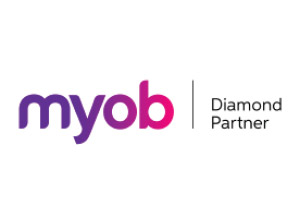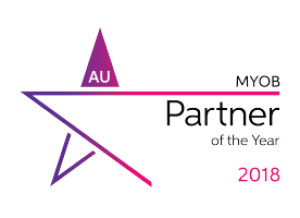Artificial Intelligence x Customer Experience = CSAT
Revolutionising Customer Satisfaction with Artificial IntelligenceArtificial Intelligence (AI) represents a complete paradigm shift in the way that modern businesses operate. It gives us the tools to automate manual processes, improve efficiency, and improve the customer experience. Client satisfaction ratings are an important measure of success. It pays to keep the customer in focus and deliver an exceptional customer experience. The values associated with customer satisfaction are often qualitative.
Managing Qualitative Measurements with AI
Larger, more complex organisations need to look at metrics to get a clear picture of how well their products or support teams are meeting customer satisfaction. The two most common metrics are Net Promoter Score (NPS) and Customer Satisfaction (CSAT). NPS is a sliding percentage score that ranges from -100 to 100. It counts your promoters and balances them against your detractors to find the overall score. NPS is typically used to measure a company’s overall relationship with their customers. CSAT is a percentage score between 0 and 100 that looks at the percentage of satisfied customers in your response pool. Sometimes CSAT gets scaled down to between 0 and 5 to look at the overall satisfaction score. It is usually used to look at the quality of a discrete product or service.
There are several ways to use AI technology to improve these measurements of success in organisations.
1. Chatbot Customer Support
AI-powered website chatbots can provide basic support and answer technical questions to automatically manage baseline website interaction. These chatbots are available 24/7 and position your website as the source of knowledge for whatever a customer is asking. Bots can also be programmed with unique responses to certain, common questions, cutting down on response times and maintaining consistency across other communication channels. It improves the experience when a customer receives help without picking up a phone, turning to Google, or launching an installed desktop communicator.
2. Tailored Recommendations
AI uses machine learning to spot patterns in consumer behaviours and produce algorithms to personalise recommendations for returning customers. A customer whose preferences are remembered will be more inclined to return to a service that knows who they are and what they want.
3. Real-time Analysis
AI can track and analyse communication in real time with advanced speech to text capability. Language and speech patterns are components used by AI to create a sort of ‘predictive text’ feature. It can identify, predict, and record future consumer needs. These predictions, whilst not perfect, can get your company ahead of the curve acting like a magic eight ball based on real customer data. Of course, any predictive forecast comes with increased risk, no one can see what the future holds.
Challenges and Considerations in AI Implementation
Implementing AI in customer service brings many benefits, but there are some important caveats to remember.
1. Balancing the participation of AI in industries that are best served by humans.
AI-driven interactions are efficient but can lack that distinct ‘human touch’. AI can be apathetic, failing to pick up on complex social or emotional cues that humans recognise instinctively. This can compromise a satisfying and memorable customer experience if the process is left entirely to AI. The better process is to engage a balance of human and AI – working together to efficiently make the most of every opportunity.
2. Making AI sound natural instead of artificial.
Human language is fluid and dynamic; there are combinations of words that AI’s filter can miss. This makes interaction with a robot obvious and jarring, especially when their programming cannot provide accurate answers to customers. ChatGPT and its ilk of generative language-based AI models will continue to learn and improve from real human examples. However, proper AI training and monitoring is required to ensure responses are appropriate–and for lack of a better word–less robotic.
3. Social and Financial costs to AI customer support
Specialised AI support software can take months or years to implement. This includes ongoing training and maintenance whenever new updates are required to keep the system robust. This sort of technology is still in its infancy, there are many growing pains and frequent updates.
There is also the question of ethics and responsibility in the use of AI. Its lack of empathy and human understanding means that does not understand much of the wider context to its responses – only that which satisfies the inputs. It may manipulate customers into making harmful or poor decisions in both the long and short term.
The efficiency drivers of technology
Technology efficiency improvement usually leverages from 3 distinct qualities. Speed, price, and functionality. It takes time to develop systems and platforms that can balance these attributes. Commonly, a system or platform will launch with one before developing the others. At the current stage, depending on the model and platform, AI really only has a strong handle on speed. It is incredibly fast and efficient to use. However, this comes at the cost of price (including accessibility) and functionality (including accuracy).
Improving the customer experience with AI to achieve improved customer satisfaction is intimidating. However, its applications have already seen success in the customer experience landscape. You can see its formula being applied in online chatbots and 24/7 self-service kiosks. It provides service during hours and situations that may be inconvenient for humans to occupy. While it’s wise to weigh the pros and cons, it is obvious that the positives outweigh the negatives.
Options for AI in Finance
Artificial Intelligence is a hot topic across all industries and roles. A human’s expertise is irreplaceable; however, leveraging AI can shift focus from day-to-day minutiae towards broader strategic tasks that drive growth and profitability. Dataline, a Cloud-based AP Automation known as APA+, is a leading data solutions provider. Dataline offers immediate cost and productivity benefits without the need for major investment in hardware and software. By integrating Dataline directly with your MYOB ERP, your organisation will be able to digitise records, automate accounts payable processes, and ensure tax compliance effortlessly.
Watch the free Dataline webinar
You may struggle to understand how AI can be integrated into workflows, how to leverage AI-driven insights effectively, and how to navigate the rapidly evolving landscape of AI trends and applications. This webinar is tailored for those eager to unlock new opportunities for efficiency and modernisation.
Talk to us about how to integrate Dataline with your ERP system to improve efficiency. Email samacs@kilimanjaro-consulting.com or call 1300 857 464 (AU) or 0800 436 774 (NZ).
























